Posts Tagged: Apis mellifera
Battle Over the Lavender: Mine, All Mine!
A yellow-faced bumble bee, Bombus vosnesenskii, is foraging on lavender in a Vacaville garden. Abruptly, the bumble bee senses a...

A yellow-face bumble bee, Bombus vosnesenskii, is interrupted by a fast-approaching honey bee as it's nectaring on lavender in a Vacaville garden. (Photo by Kathy Keatley Garvey)
It's Friday Fly Day!
It's "Friday Fly Day," but no flies today. They're in a "no-fly zone." That's because of the freezing temperatures. Jack Frost is nipping at...
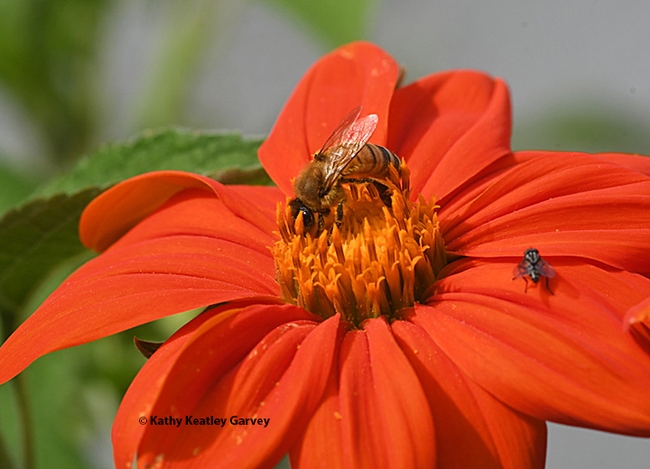
Mexican sunflower, Tithonia rotundifola. (Photo by Kathy Keatley Garvey)
A Good Day for a Praying Mantis
It was a good day for a praying mantis. It was not a good day for a honey bee. Here's what happened in the "Daily Insect News": a gravid praying...
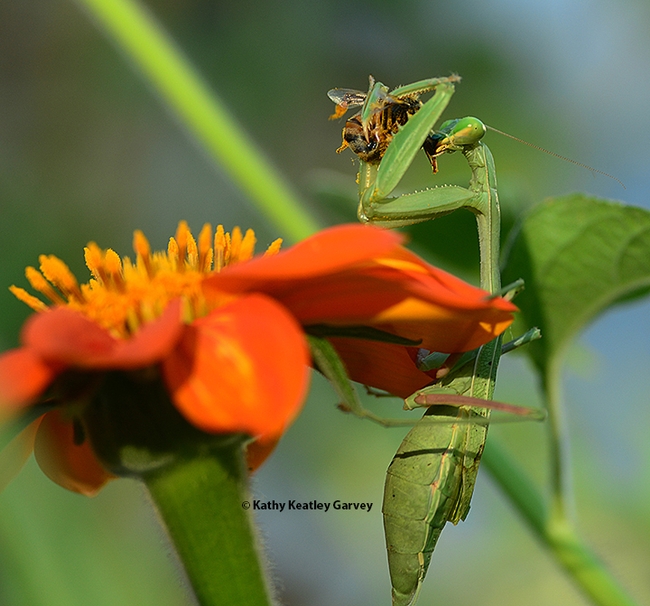
A gravid praying mantis, Stagmomantis limbata, dines on a honey bee in a Vacaville pollinator garden. (Photo by Kathy Keatley Garvey)
Nissa Coit: Ethyl Oleate Pheromone and Honey Bees
Interested in honey bee research? Then you'll want to attend--or listen via Zoom--the next seminar hosted by the UC Davis Department of...
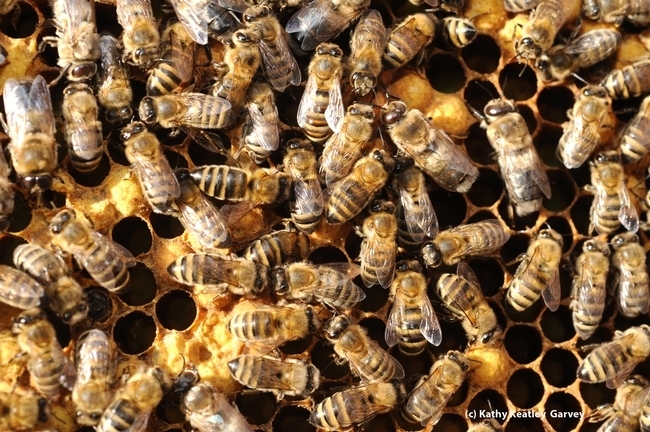
Close-up of honey bees in a spring colony. (Photo by Kathy Keatley Garvey)
The Bee and the Butterfly
The bee and the butterfly. Or, Apis mellifera and Colias eurytheme. One's a beneficial insect. That would...
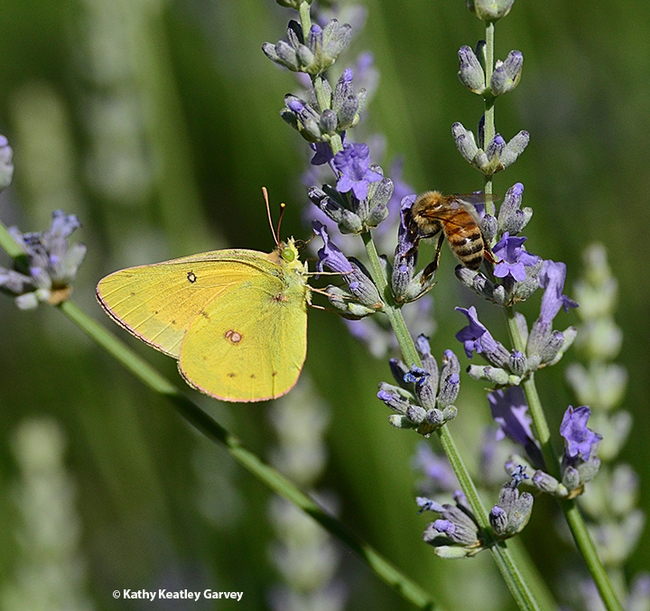
A sulphur butterfly, Colias eurytheme, and a honey bee, Apis mellifera, meet on lavender. The butterfly is a male, as identified by Art Shapiro, UC Davis distinguished professor of evolution and ecology. (Photo by Kathy Keatley Garvey)
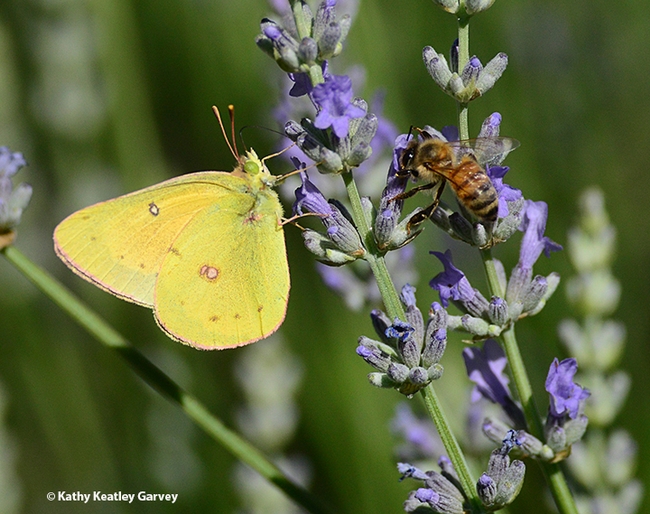
Hey, bee, I was here first! (Photo by Kathy Keatley Garvey)
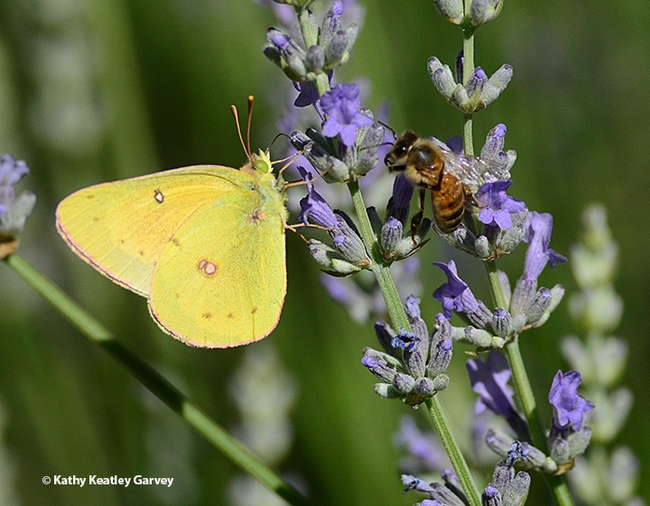
Hey, butterfly! I was here second. (Photo by Kathy Keatley Garvey)
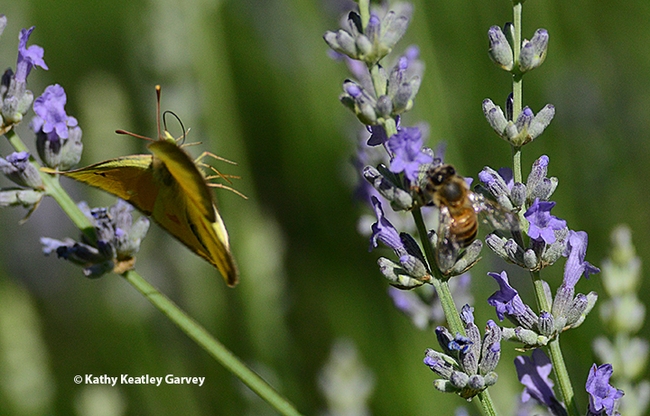
The male butterfly, leery of the encroaching bee, takes flight. (Photo by Kathy Keatley Garvey)

